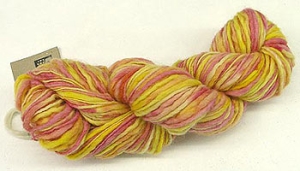 Organic yarns have been the majority of the fibers featured in our Yearn-Worthy Yarns series thus far. For this week’s installment, we are covering another vital element of green living and sustainable production – fair trade.
Organic yarns have been the majority of the fibers featured in our Yearn-Worthy Yarns series thus far. For this week’s installment, we are covering another vital element of green living and sustainable production – fair trade.
Wikipedia explains fair trade quite clearly as “an organized social movement and market-based approach to alleviating global poverty and promoting sustainability. The movement promotes the payment of a fair price as well as social and environmental standards in areas related to the production.” Based in Oneonta, New York, the Da’vida Fair Trade Store sells its own line of hand painted and hand spun yarns made from alpaca, wool and yak fibers.
Painted by Lisa Meriam, a sheep farmer who lives in upstate New York, Da’vida’s collection of yarns come uncolored from Uruguay, Bolivia and Peru. All of the yarns are certified by the Fair Trade Federation, ensuring an extensive number of trade and development points are met. Upon arriving in New York, Lisa then paints the yarns by hand with all natural dyes. Also available are hanks of yarn hand spun by Lisa from her own sheep’s wool. Currently, every hank of yarn is unique, though Da’vida is working on a more predictable line of colors.
“Da’vida, the ‘giving of life’, or ‘the life of giving’ reflects the basic philosophy of Da’vida, that of receiving a gift, and then passing that gift along to other,” says the store’s website. When it comes to creating knitted or crocheted creations, these concepts go hand in hand (no pun intended).
Who makes your favorite sustainable yarns?
Which natural fiber is your favorite to work with? (i.e. cotton, wool, bamboo, hemp … etc.)
Let us know what you love to create with and we might feature them in the next installment of Yearn-Worthy Yarns!


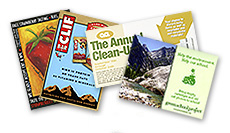
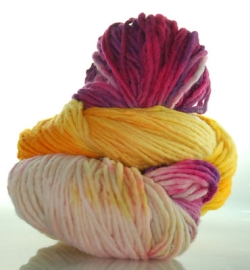
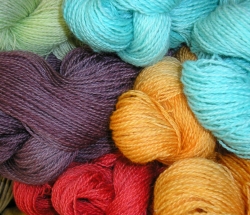
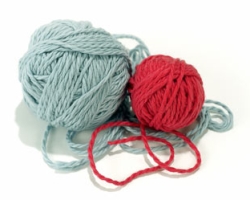
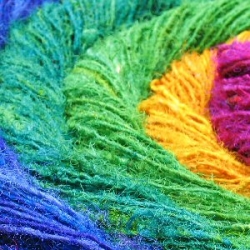
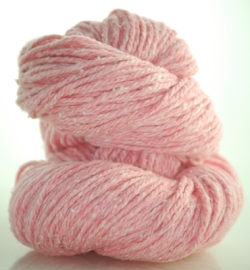

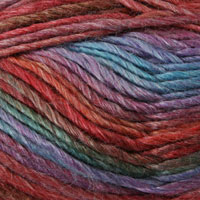
I took one look at this beautiful yarn and thought, “Pink lemonade!”
Pingback: Victoria Everman :: Writer, Model, Environmentalist, Crafter, Yogi » Blog Archive » Weekly Green Crafts: CAGW Round-Up for March 1st-March 7th
i’m new to the knitting thing, but have been involved in sustainable living for many years. it is so wonderful to be able to bring the two together. there is so much out there! i’m having a blast knitting, blogging, knitting, blogging.
thanks for this post!
i’m new to the knitting thing, but have been involved in sustainable living for many years. it is so wonderful to be able to bring the two together. there is so much out there! i’m having a blast knitting, blogging, knitting, blogging.
thanks for this post!
i’m new to the knitting thing, but have been involved in sustainable living for many years. it is so wonderful to be able to bring the two together. there is so much out there! i’m having a blast knitting, blogging, knitting, blogging.
thanks for this post!
i’m new to the knitting thing, but have been involved in sustainable living for many years. it is so wonderful to be able to bring the two together. there is so much out there! i’m having a blast knitting, blogging, knitting, blogging.
thanks for this post!
These yarns are beautiful. I’m allergic to animal fibers, though, so cotton/soy/bamboo are my choices. Unfortunately, these yarns are out my my reach financially for any kind of larger projects, although I’ve splurged on Peruvian cotton yarns from Ecobutterfly for small things (and LOVED the yarn). I feel so guilty going to the local big-box store to buy acrylics at bargain prices, but that’s what I can afford. Sigh.
These yarns are beautiful. I’m allergic to animal fibers, though, so cotton/soy/bamboo are my choices. Unfortunately, these yarns are out my my reach financially for any kind of larger projects, although I’ve splurged on Peruvian cotton yarns from Ecobutterfly for small things (and LOVED the yarn). I feel so guilty going to the local big-box store to buy acrylics at bargain prices, but that’s what I can afford. Sigh.
These yarns are beautiful. I’m allergic to animal fibers, though, so cotton/soy/bamboo are my choices. Unfortunately, these yarns are out my my reach financially for any kind of larger projects, although I’ve splurged on Peruvian cotton yarns from Ecobutterfly for small things (and LOVED the yarn). I feel so guilty going to the local big-box store to buy acrylics at bargain prices, but that’s what I can afford. Sigh.
These yarns are beautiful. I’m allergic to animal fibers, though, so cotton/soy/bamboo are my choices. Unfortunately, these yarns are out my my reach financially for any kind of larger projects, although I’ve splurged on Peruvian cotton yarns from Ecobutterfly for small things (and LOVED the yarn). I feel so guilty going to the local big-box store to buy acrylics at bargain prices, but that’s what I can afford. Sigh.
Pingback: Recycled and Fair Trade Beads : Crafting a Green World
Pingback: Fabulous Recycled Fabric Paper from Soolip : Crafting a Green World
Pingback: Eco-friendly wool yarn for green knitters | green LA girl